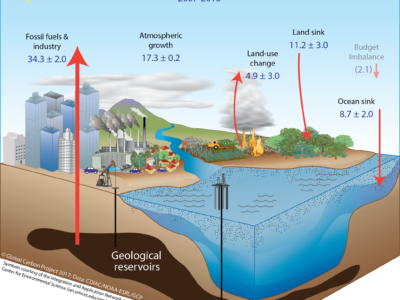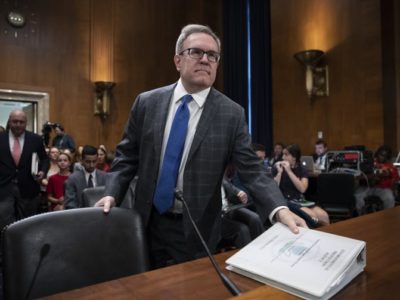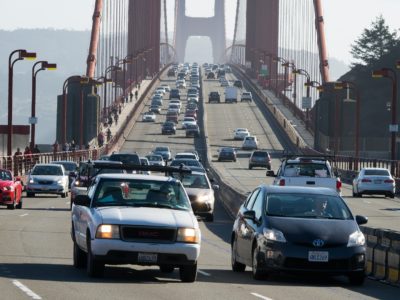GHGs
In Defense of Live Carbon
Why Stopping Deforestation May be the Hardest and Most Important Part of the Climate Change Challenge
When contemplating the enormous challenge of global climate change, it is sometimes helpful to think about a simple model of the global carbon budget (see figure below). These admittedly reductionist schematics distinguish between sources, sinks, and reservoirs. Fossil hydrocarbons from the geological reservoir–call this dead carbon—are extracted and burned to generate energy, emitting vast amounts …
Continue reading “In Defense of Live Carbon”
CONTINUE READINGGuest Blogger Gregory Dotson: Oregon May Join the Western Climate Initiative: What About Gasoline Prices?
Regardless of State Action, Surging Sales of Electric Vehicles Could Crash Gasoline Prices
Oregon is on the verge of taking historic action to establish an economy-wide cap and invest program and clean up the state’s carbon pollution. In doing so, Oregon could demonstrate how one state can do its part to avoid the worst effects of climate change. The concept dates back more than a decade, but the …
CONTINUE READINGClimate Negotiations Start in Poland: Setting the Stage
Much at Stake in COP-24, Including Negotiation of Paris Rulebook to Implement 2015 Commitments
This week and next, negotiators are meeting in Poland for the big annual international climate-change meeting. This meeting, formally, is the 24th Conference of the Parties to the UN Framework Convention on Climate Change, the 1992 treaty that provides the foundation for all official international action on climate change, and informally is called “COP-24.” It …
Continue reading “Climate Negotiations Start in Poland: Setting the Stage”
CONTINUE READINGGuest Bloggers Deborah Gordon and Frances Reuland: Is California Extraordinary? Its Oil Resources Certainly Are
Facts About California’s Oil and Greenhouse Gas Emissions
Despite ongoing federal rollbacks to environmental regulations, California has the right to set its own clean air standards because it is truly extraordinary. Truth be told, the compelling circumstances that first set in motion California’s vehicle emissions standards remain entirely valid. And there are four recent conditions, related to California’s oil supply, production, and refining, …
CONTINUE READINGGuest Bloggers Jennifer Garlock and Michelle Melton: California Enacts Law to Reduce Greenhouse Gas Emissions from Ride-Hailing Companies
Governor Brown Signs SB 1014, Allowing Innovative Approaches to Emissions Reduction
As part of its broader efforts to tackle climate change, California has set its sights on a new, and fast-growing, source of greenhouse gas (GHG) emissions: ride-hailing companies like Uber and Lyft. On September 13, Governor Brown signed SB 1014, making California the first U.S. jurisdiction to require that ride-hailing companies—also known as transportation network …
CONTINUE READINGFollow the Money
Investment in the World Energy System Still Dominated by Fossil Fuels
Not that money. Not the hush money, the payoffs, the tax and banking fraud. And not the dark money seeking to influence our environmental, climate, and clean energy policies. Nope, I am talking about the actual money invested in the world energy system last year. Granted, this may not be as interesting to many readers …
Continue reading “Follow the Money”
CONTINUE READINGTrump administration and California are on collision course over vehicle emissions rules
Meredith Hankins and Nicholas Bryner co-author legal explainer for The Conversation
California and the Trump administration are going different directions on mileage standards. AP Photo/Rich Pedroncelli Meredith Hankins, University of California, Los Angeles and Nicholas Bryner, Louisiana State University The Trump administration on Aug. 2 formally announced a proposal to freeze fuel economy standards and tailpipe emission standards for new cars. In addition, it is proposing …
CONTINUE READINGCARB Seeks to Maintain Stringency of California’s Vehicle Standards
Emmett Institute submits public comment in support of CARB’s efforts
Back in the halcyon days of 2012 when EPA, NHTSA, California, and the automakers crafted a grand bargain to adopt national vehicle emission standards, California agreed that compliance with vehicle emission standards adopted at the federal level would be “deemed to comply” with California’s standards. Now, as it becomes clear that the federal government intends …
Continue reading “CARB Seeks to Maintain Stringency of California’s Vehicle Standards”
CONTINUE READINGGuest Blogger Alex Jackson: The Way Forward on Cap-and-Trade
Incorporate Elements of SB 775 and AB 378 to Build on a Proven Program
California is in the process of defining the next chapter of its world-renowned climate leadership. Having pioneered a set of policies over the past decade that have put the state on course to meet its greenhouse gas emissions limit in 2020, lawmakers now face the question of what role the state’s cap-and-trade program should play …
Continue reading “Guest Blogger Alex Jackson: The Way Forward on Cap-and-Trade”
CONTINUE READINGGuest Bloggers Michael Wara and Danny Cullenward: Understanding SB 775: A Realistic Path to Achieving California’s Climate Goals
SB 775 Provides a Strong Carbon Pricing Policy and Addresses Legal and Political Constraints
Two recent Legal Planet contributors have shared concerns about SB 775 over the last several days (Ann Carlson’s piece is here and Dallas Burtraw’s is here). We write here to provide context—economic, legal, and political—to help readers, and perhaps even these respected authors, better understand why the bill proposes to extend and evolve California’s approach …
CONTINUE READING








